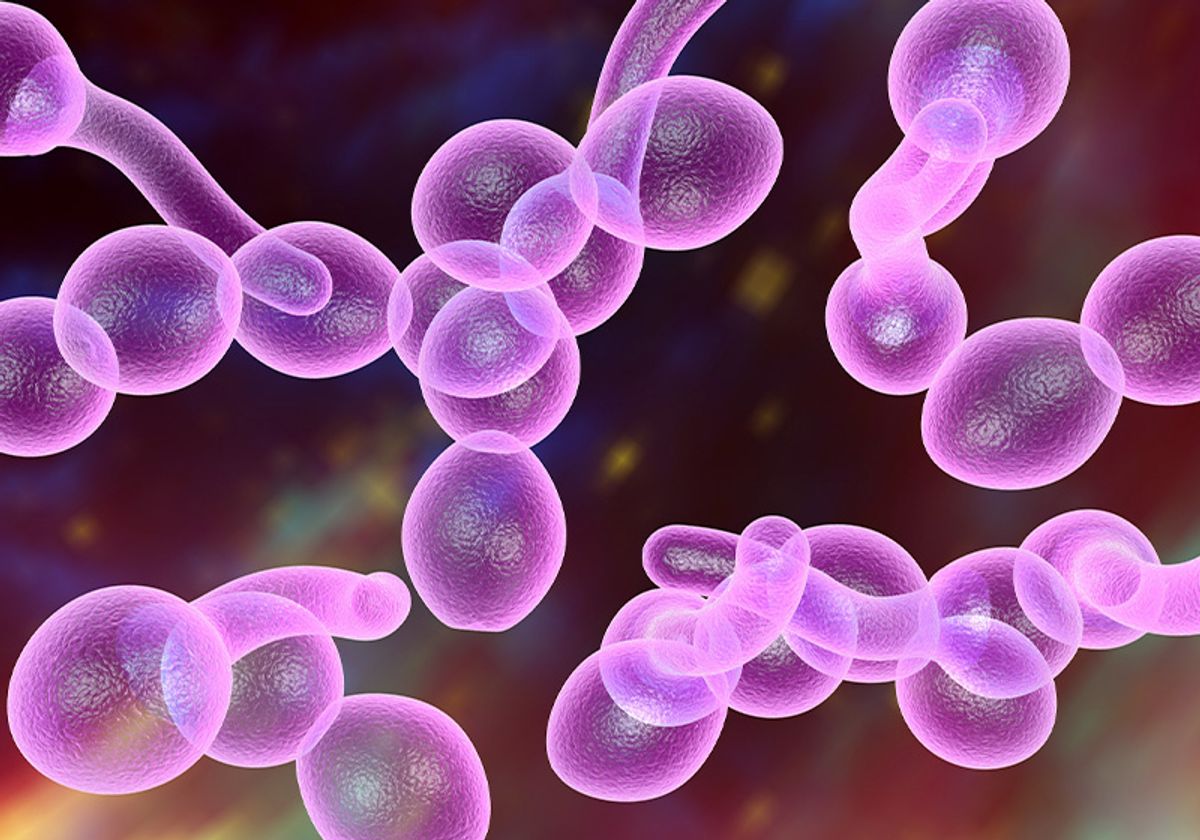


Let’s talk about something that lives in your body right now — and no, it’s not as creepy as it sounds. It’s Candida, a type of yeast that naturally exists in your gut, on your skin, and in other warm, moist areas of the body. Most of the time, it doesn’t cause any problems. But when it gets out of control? That’s when things can get really uncomfortable.
In this post, we’ll break down what Candida is, how it can mess with your health, and what you can do to kick it back into balance.
Candida is a yeast (a type of fungus) that’s part of your body’s normal microbiome — the collection of bacteria, yeasts, and other microbes that live in and on you. The most well-known type is Candida albicans, and it typically hangs out in your mouth, gut, skin, and other places like the vagina.
Normally, your immune system and friendly gut bacteria keep Candida in check. But when something throws off that balance (think antibiotics, high sugar intake, or stress), Candida can multiply like crazy — and that’s when trouble starts.
When Candida grows out of control, it can cause a condition called candidiasis. This can show up in different ways:
Oral thrush: White patches in the mouth or on the tongue. Painful and annoying.
Vaginal yeast infections: Itching, burning, discharge. You know the drill.
Digestive issues: Candida overgrowth in the gut can cause bloating, gas, constipation, or diarrhea.
Fatigue and brain fog: Yes, seriously. It can mess with your mental clarity and energy levels.
Skin rashes or fungal infections: Often in warm areas like underarms, groin, or between toes.
In rare but serious cases — usually in people with weakened immune systems — Candida can enter the bloodstream, causing systemic infections that require urgent medical treatment.
Think you might be dealing with Candida? Here are some symptoms that might pop up:
Constant tiredness
Recurring yeast or urinary infections
Digestive discomfort (bloating, irregular bowel movements)
White coating on your tongue
Mood swings, anxiety, or brain fog
Intense sugar or carb cravings
Skin issues like eczema or persistent rashes
Sound familiar? You’re not alone — many people deal with Candida overgrowth without even realizing it.
Several factors can create the perfect storm for Candida to flourish:
Antibiotics: These kill both bad and good bacteria, leaving yeast free to grow.
High-sugar diets: Yeast loves sugar. A sweet tooth can feed the beast.
Stress: Chronic stress weakens your immune system.
Hormonal imbalances: Birth control or hormone therapy can disrupt the microbiome.
Weakened immunity: From illness, autoimmune conditions, or even just poor sleep and nutrition.
The good news? You can rebalance your body and bring Candida under control. Here’s how:
Start by ditching the foods that fuel Candida:
Sugar (even natural ones like honey and maple syrup)
Refined carbs (white bread, pasta, pastries)
Alcohol
Processed foods
Instead, load up on:
Leafy greens and non-starchy veggies
Lean protein (chicken, fish, eggs)
Healthy fats (avocado, olive oil, coconut oil)
Fermented foods (if tolerated — like sauerkraut and kimchi)
Certain herbs and supplements can help kill off excess Candida:
Caprylic acid
Oregano oil
Grapefruit seed extract
Pau d’arco tea
Always check with your healthcare provider before starting new supplements.
Taking a high-quality probiotic helps repopulate your gut with good bacteria that keep yeast in check. Look for strains like Lactobacillus acidophilus and Bifidobacterium.
As Candida dies off, it releases toxins — which can temporarily make you feel worse. This is called the “die-off” reaction. To minimize symptoms:
Stay hydrated
Get plenty of sleep
Support your liver with foods like leafy greens, garlic, and turmeric
Consider gentle detox teas (like dandelion or milk thistle)
If you’ve tried dietary changes and supplements but still feel lousy, or your symptoms are severe, it’s time to see a healthcare professional. They may recommend testing (like a stool or blood test) and more targeted treatment.
Candida overgrowth can be sneaky and overwhelming, but the solution doesn’t have to be. With the right diet, some natural support, and patience, you can bring your body back into balance.
Just remember — healing your gut takes time. Listen to your body, stay consistent, and don’t be afraid to ask for help when you need it.